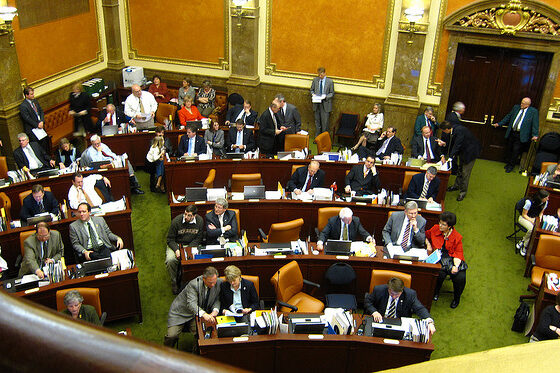
A view inside the House chamber of the Utah State Legislature. Image by deltaMike.
Public demands for transparency in the political process have long been a central feature of American democracy, and recent technological improvements have considerably facilitated the ability of state governments to respond to such public pressures. With online legislative archives, state legislatures can make available a large number of public documents. In addition to meeting the demands of interest groups, activists, and the public at large, these websites enable researchers to conduct single-state studies, cross-state comparisons, and longitudinal analysis. While online legislative archives are, in theory, rich sources of information that save researchers valuable time as they gather data across the states, in practice, government agencies are rarely completely transparent, often do not provide clear instructions for accessing the information they store, seldom use standardised norms, and can overlook user needs. These obstacles to state politics research are longstanding: Malcolm Jewell noted almost three decades ago the need for “a much more comprehensive and systematic collection and analysis of comparative state political data.” While the growing availability of online legislative resources helps to address the first problem of collection, the limitations of search and retrieval functions remind us that the latter remains a challenge. The fifty state legislative websites are quite different; few of them are intuitive or adequately transparent, and there is no standardised or systematic process to retrieve data. For many states, it is not possible to identify issue-specific bills that are introduced and/or passed during a specific period of time, let alone the sponsors or committees, without reading the full text of each bill. For researchers who are interested in certain time periods, policy areas, committees, or sponsors, the inability to set filters or immediately see relevant results limits their ability to efficiently collect data. Frustrated by the obstacles we faced in undertaking a study of state-level immigration legislation before and after September 11, 2001, we decided to instead evaluate each state legislative website—a “state of the states” analysis—to…









